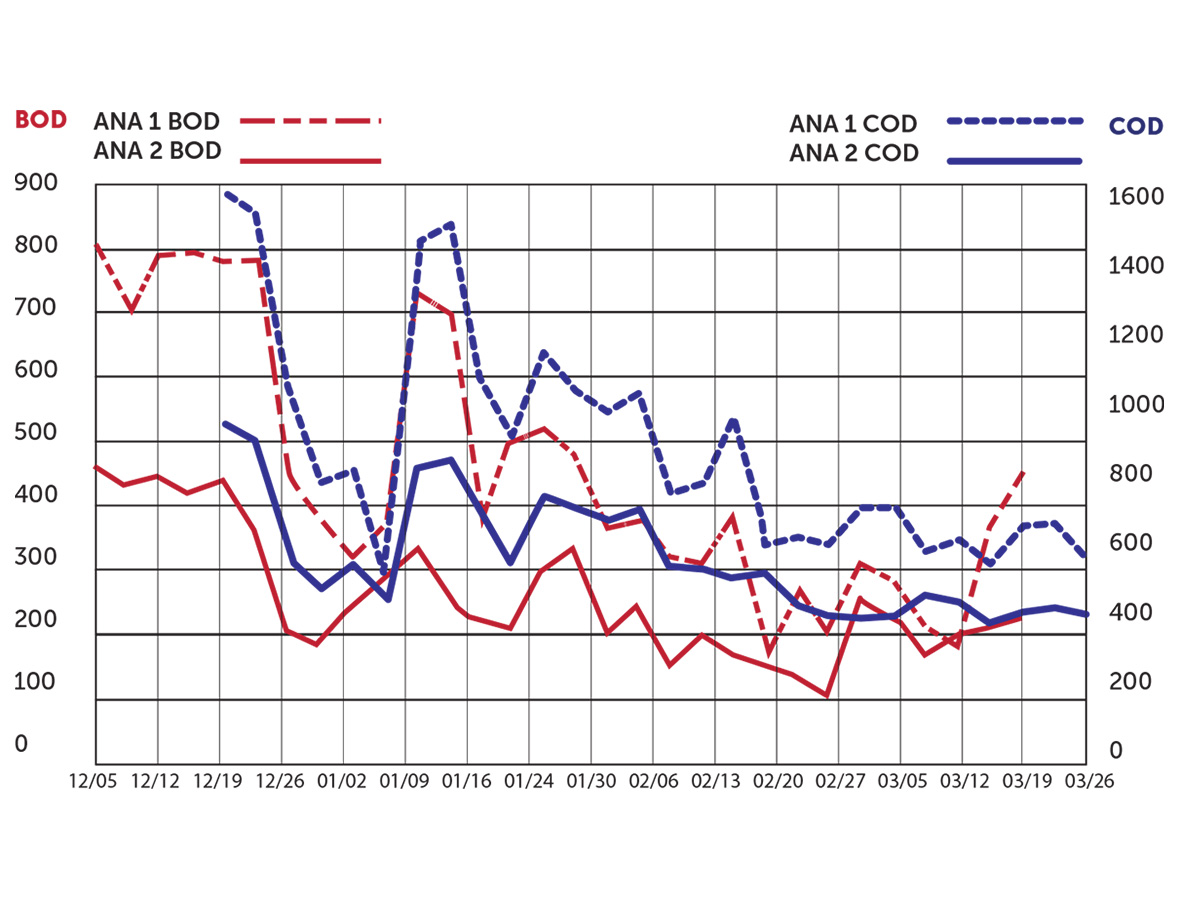A paper mill wastewater facility was treating 940 tons of paper bags, recycled linerboard, and corrugating medium, daily. The mill was interested in improving wastewater operating efficiency and lowering operating expenses over their standard polymer usage. The plant was experiencing filamentous bacteria, solids, and bulking issues in the final clarifier. It was discharging 4,000 pounds of fiber per day into the Ohio river.
The combined effluent from two anaerobic ponds filled an aerobic pond before clarification. After clarification, effluent was discharged to the river and the biosolids were processed by a belt press for thickening before landfill application.
A 9-month test was developed in which Huma Environmental® BIO ENERGIZER® was administered to make nutrients more available to wastewater microorganisms, thereby stimulating natural bio-oxidation processes and enhancing sludge reduction. BIO ENERGIZER® applied over a period of 9 months resulted in reduced filamentous bacteria, bulking issues, and total suspended solids (TSS.) Turbidity in the effluent dramatically improved with $50,000 in polymer savings in the final clarifier. Additionally, fiber discharge was reduced, as were the BOD and COD levels in the effluent.
Huma Environmental® BIO ENERGIZER® is a formulation of nutrients, organic acids, natural biological stimulants, and energy systems that balance the natural microbial ecosystem to increase bio- oxidation capacity in lagoon systems. Wastewater facility operators have been using BIO ENERGIZER® for many years to cut their sludge-hauling costs.
Related Posts

This Week in Ag #88
No month is more associated with a crop than October is with a certain orange orb. That’s why it’s #NationalPumpkinMonth. Pumpkins are the centerpiece of the booming $1.25 billion US agritourism industry. You-pick pumpkin patches are a main attraction, providing family photo opportunities young mothers love even more than their pumpkin spice lattes. Corn mazes, apple

It’s ALIVE!
by Heather Jennings, PE . . . the lagoon sludge layer, that is. I’ve seen many lagoons full of sludge, and the general attitude I find in the water industry is that the sludge layer is inert and really can only be mechanically dredged. To a certain point, that is correct: sand, soil, grit, plastics—basically

MICROPLEX® JS Jump-Starts Summer Camp Wastewater Treatment Plant
Each year a summer camp in Utah becomes inundated with campers. The camp’s wastewater treatment plant goes dormant during the winter months with only occasional flows. The biomass becomes very inactive and in years past became overloaded and upset when the high organic load arrived at the plant at the beginning of the camping season.


